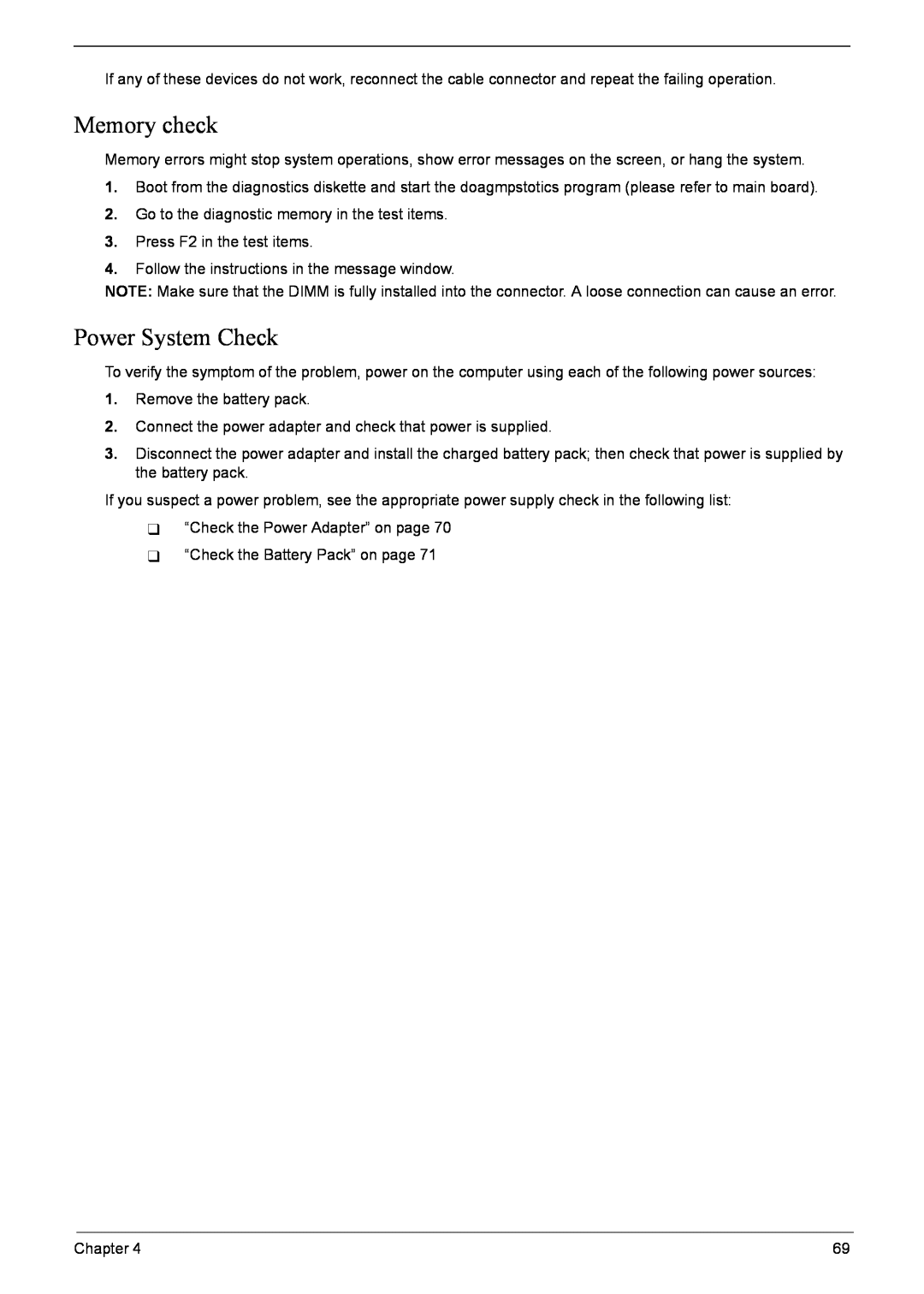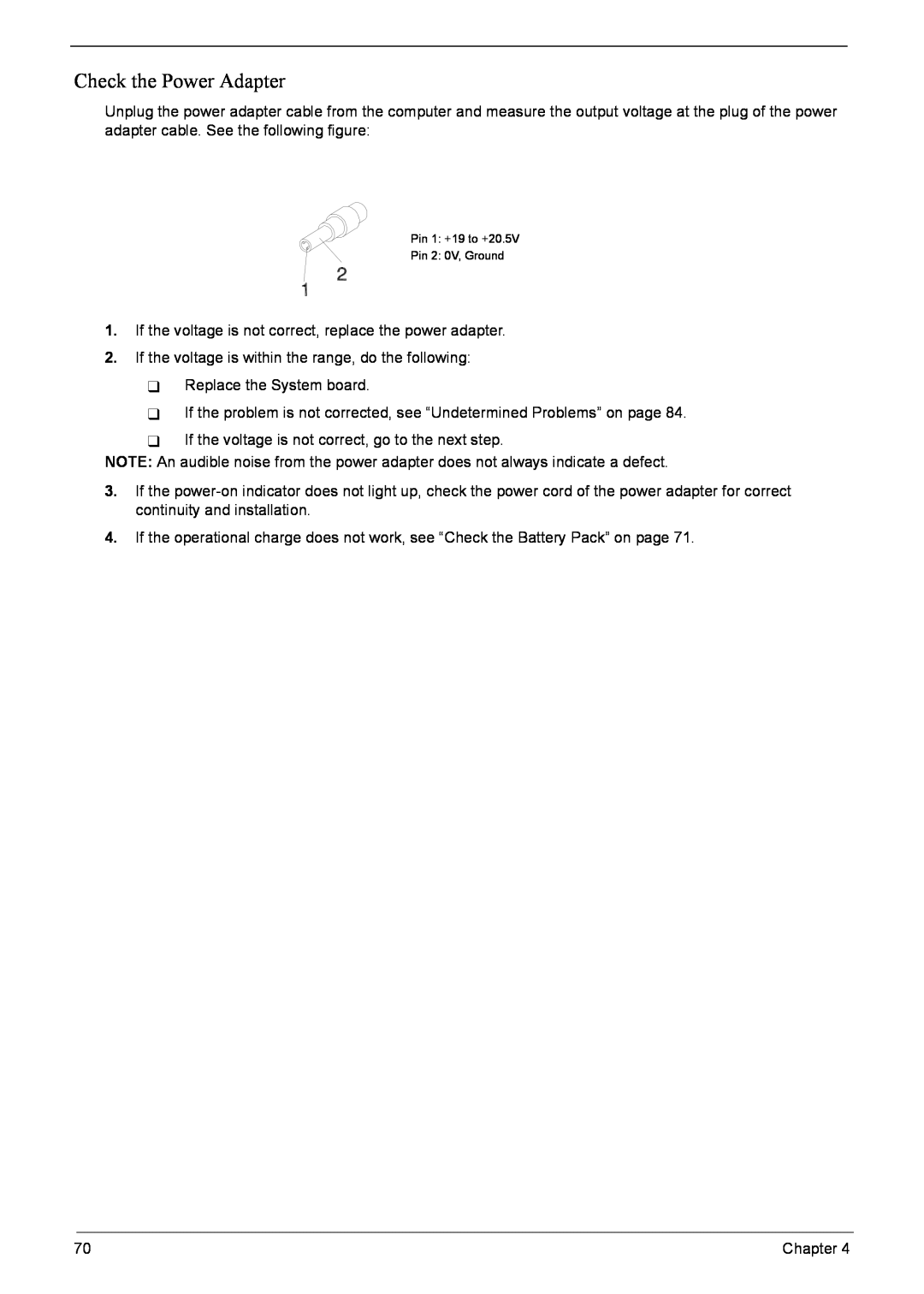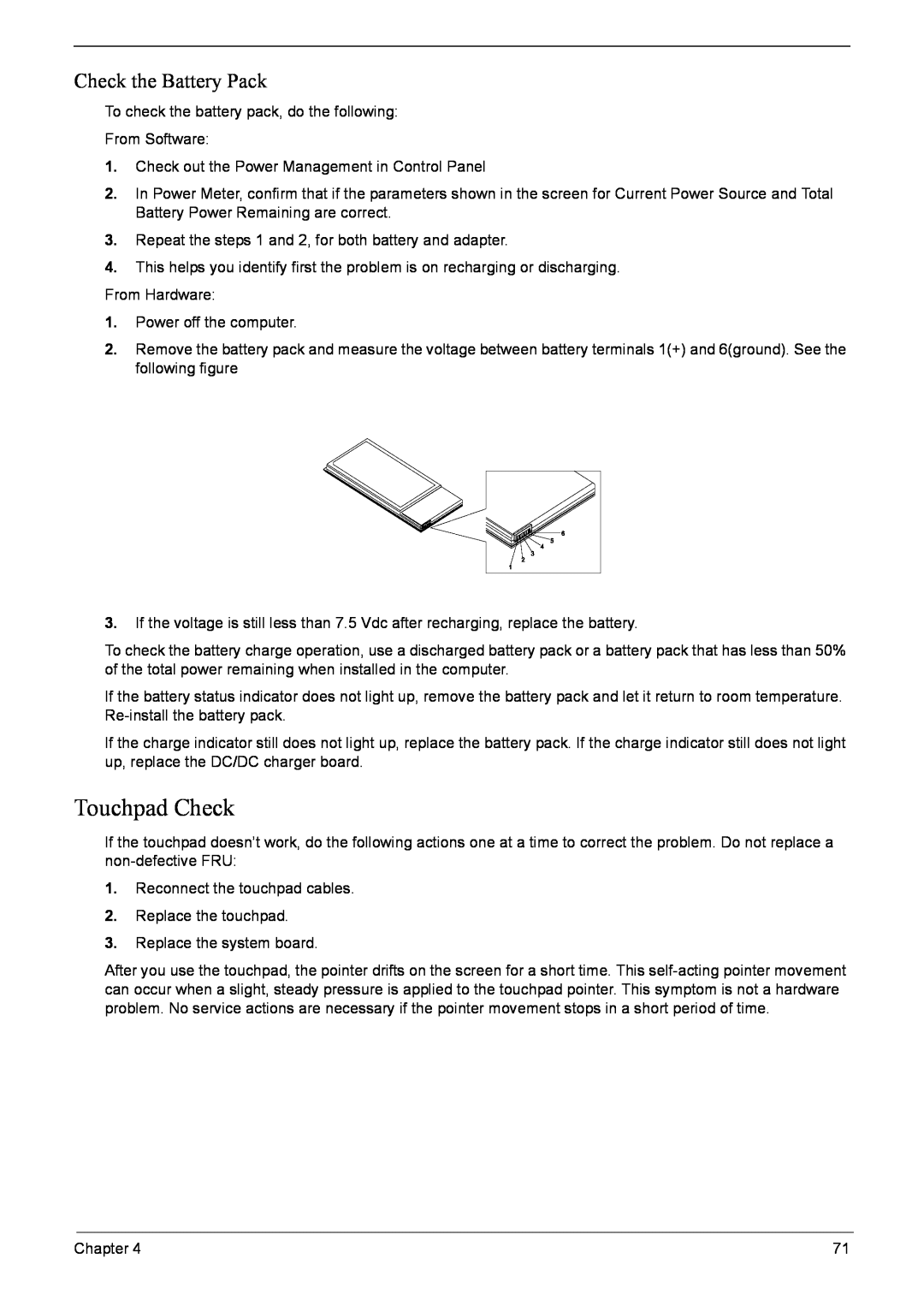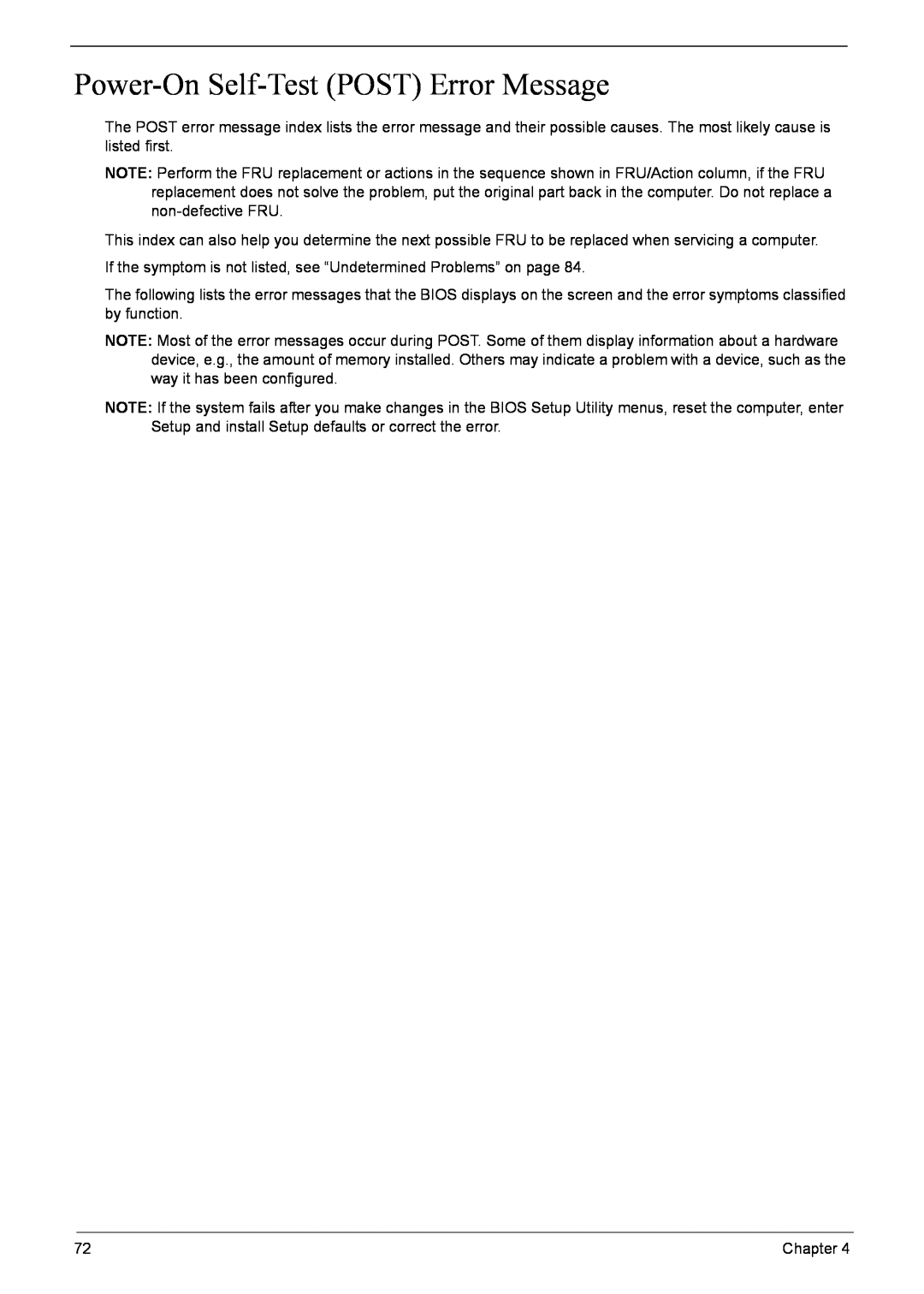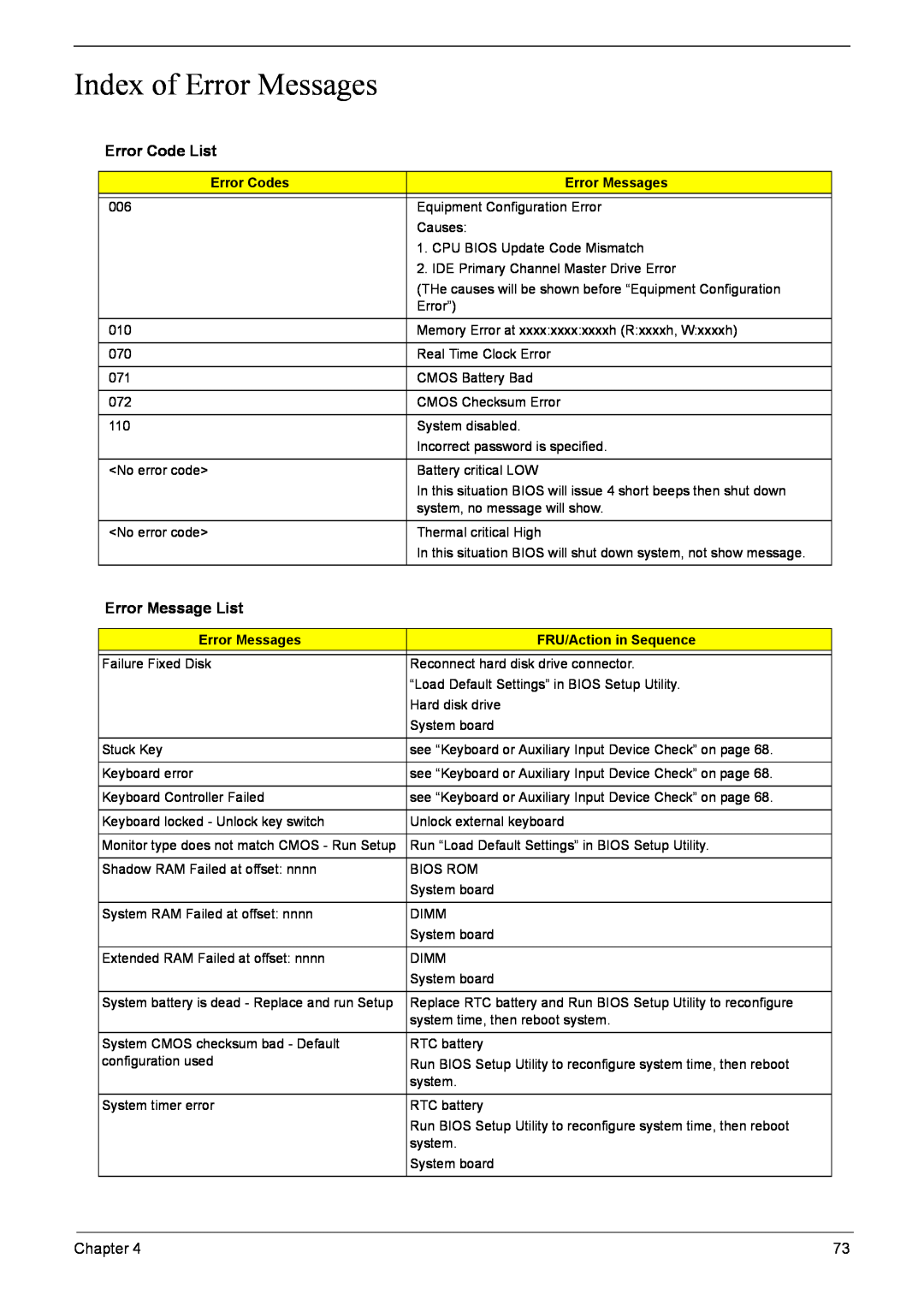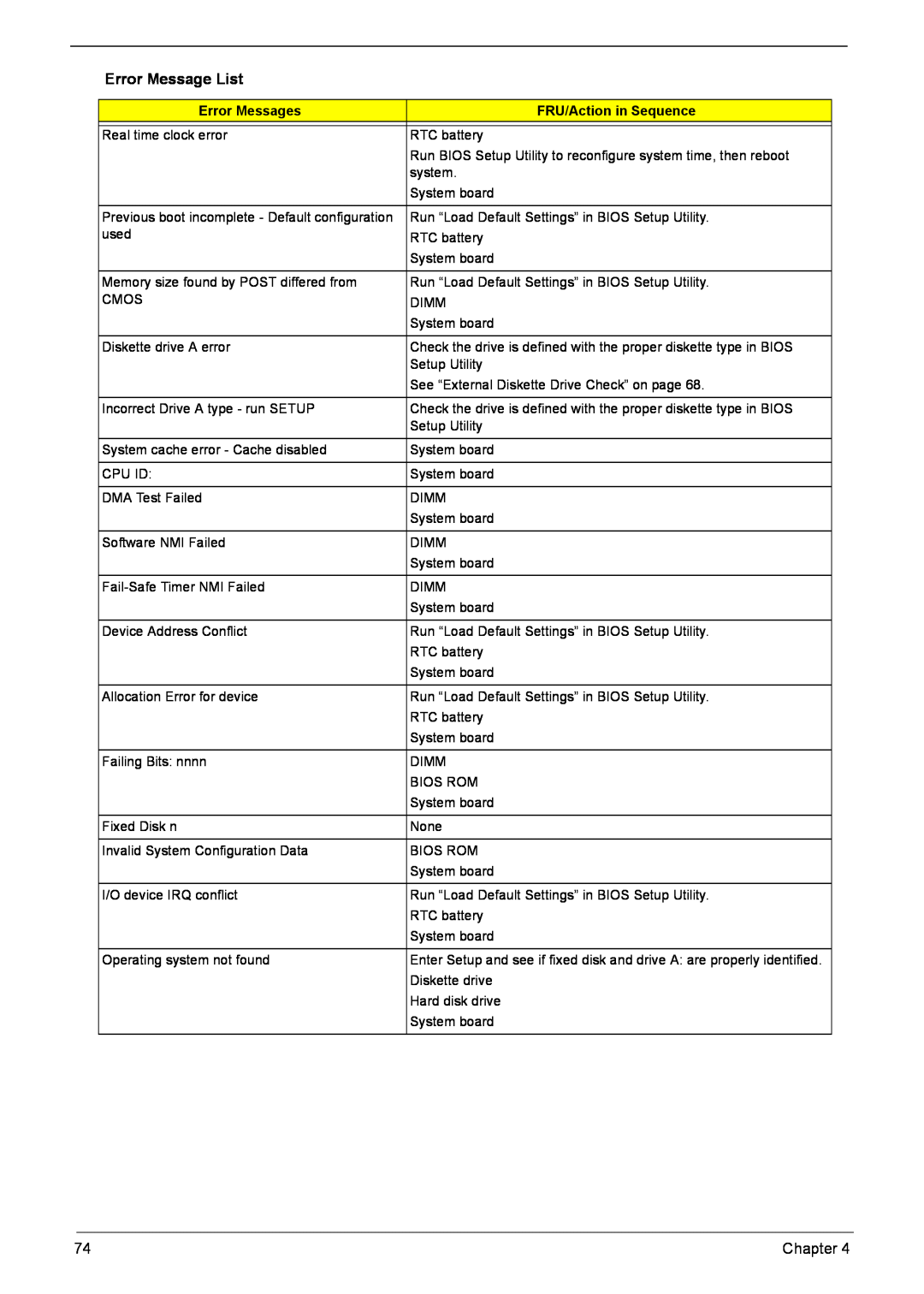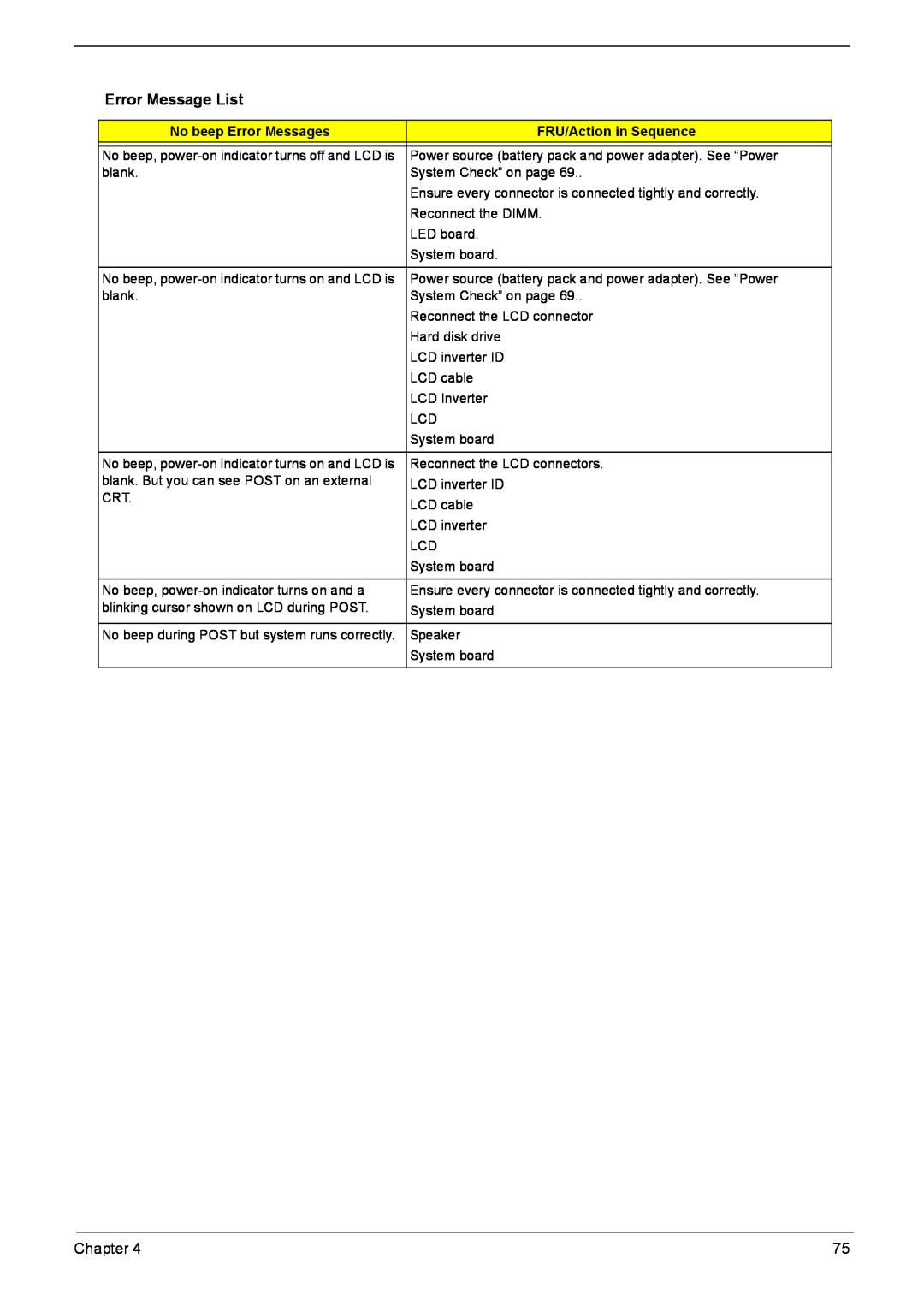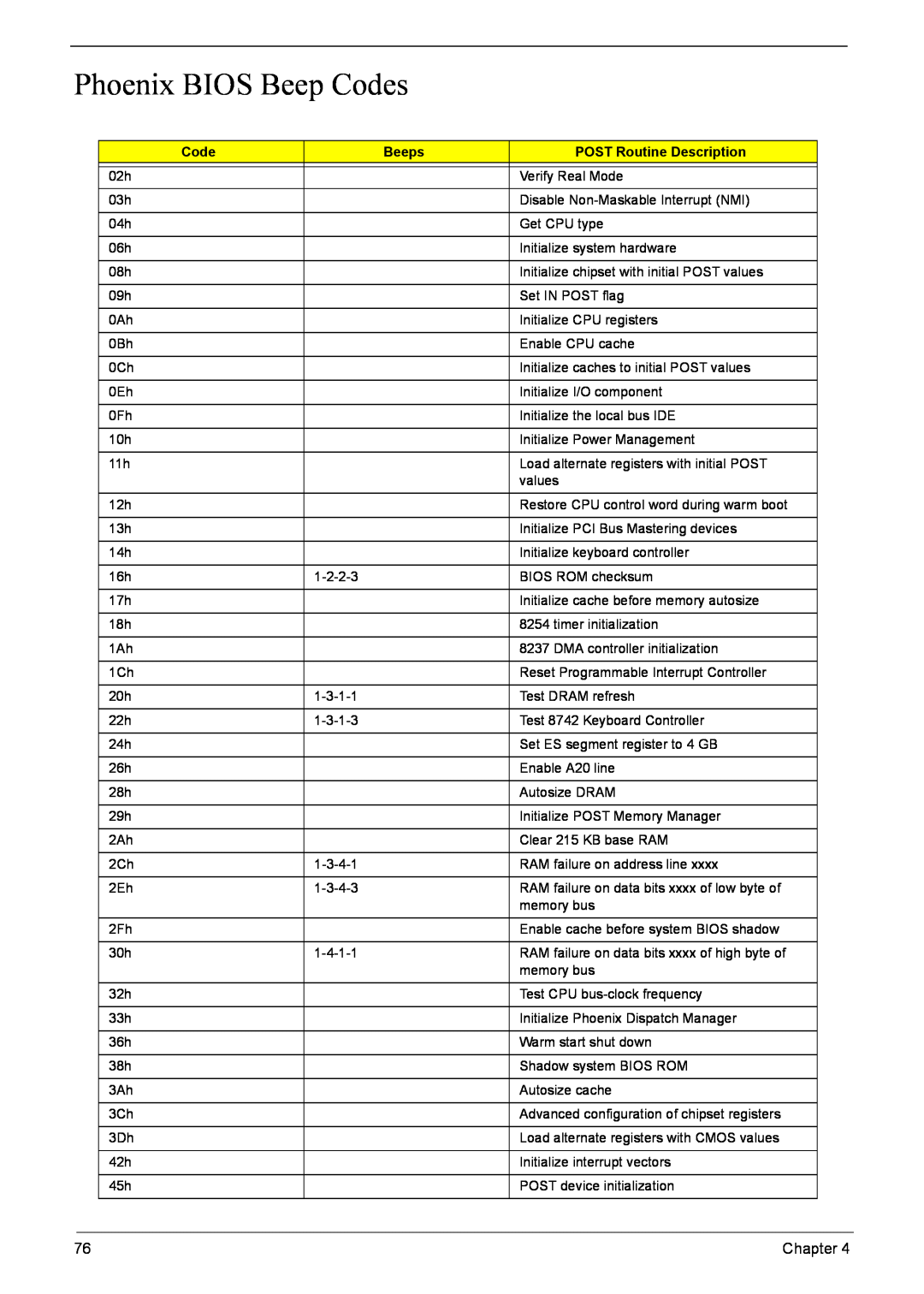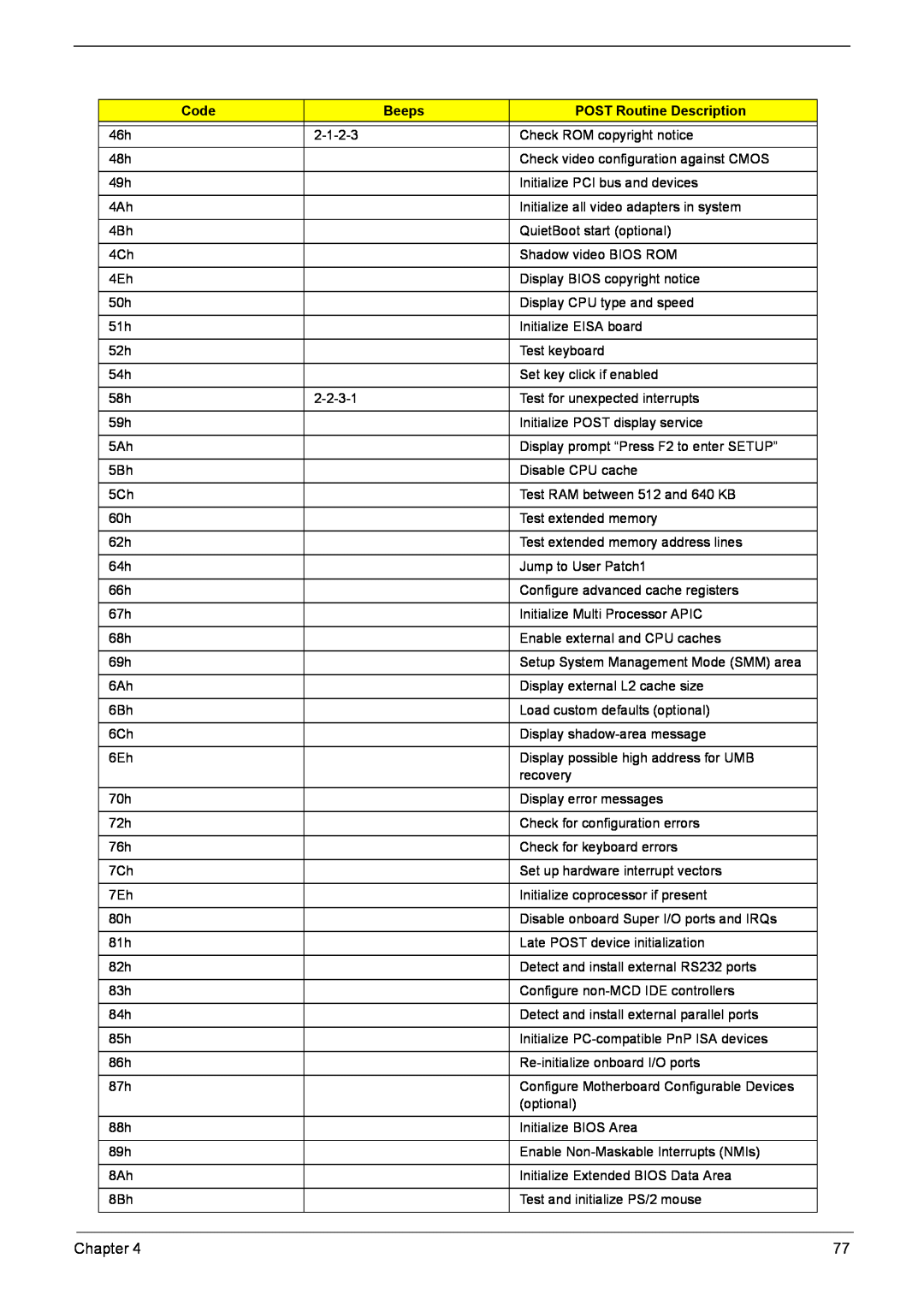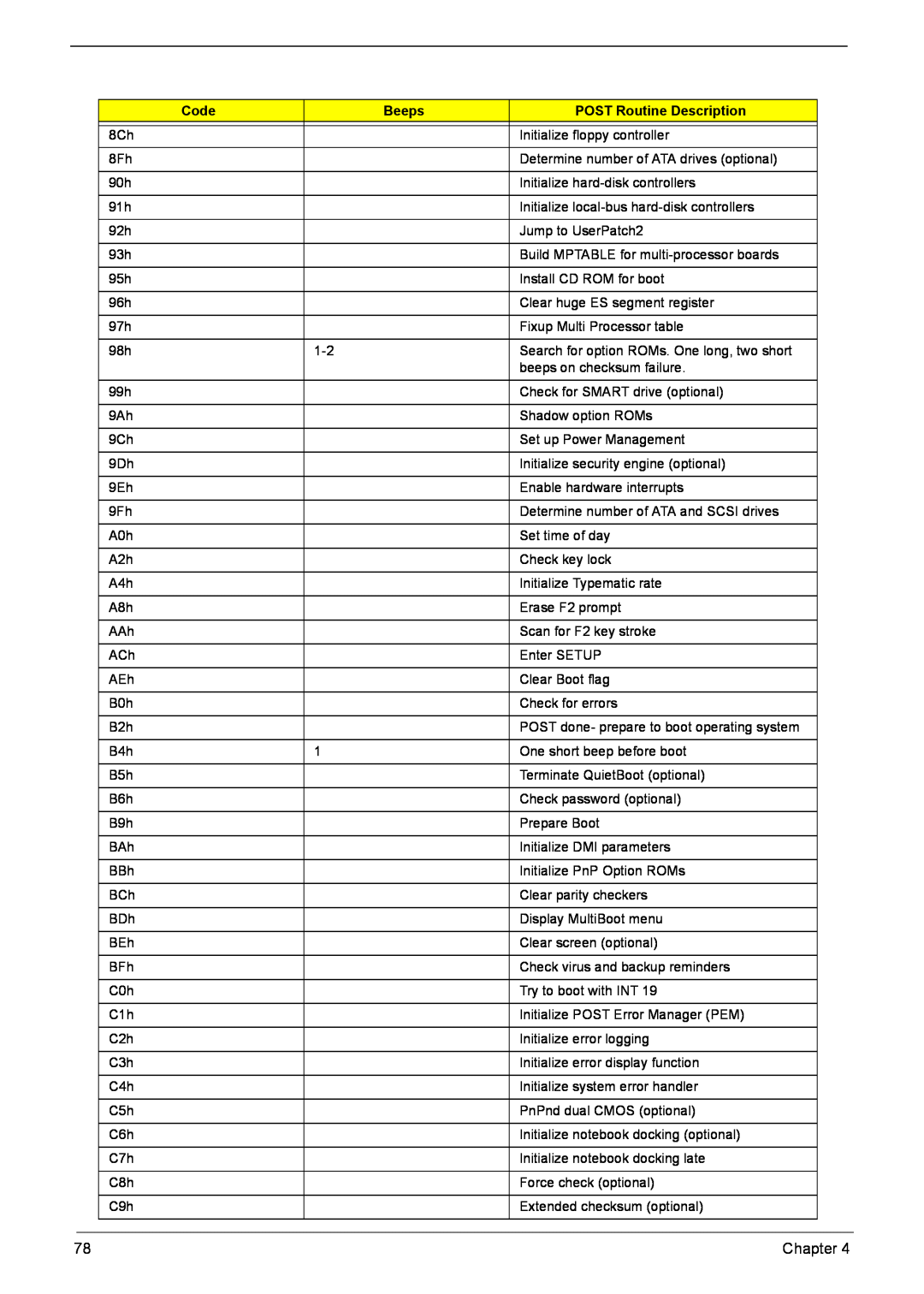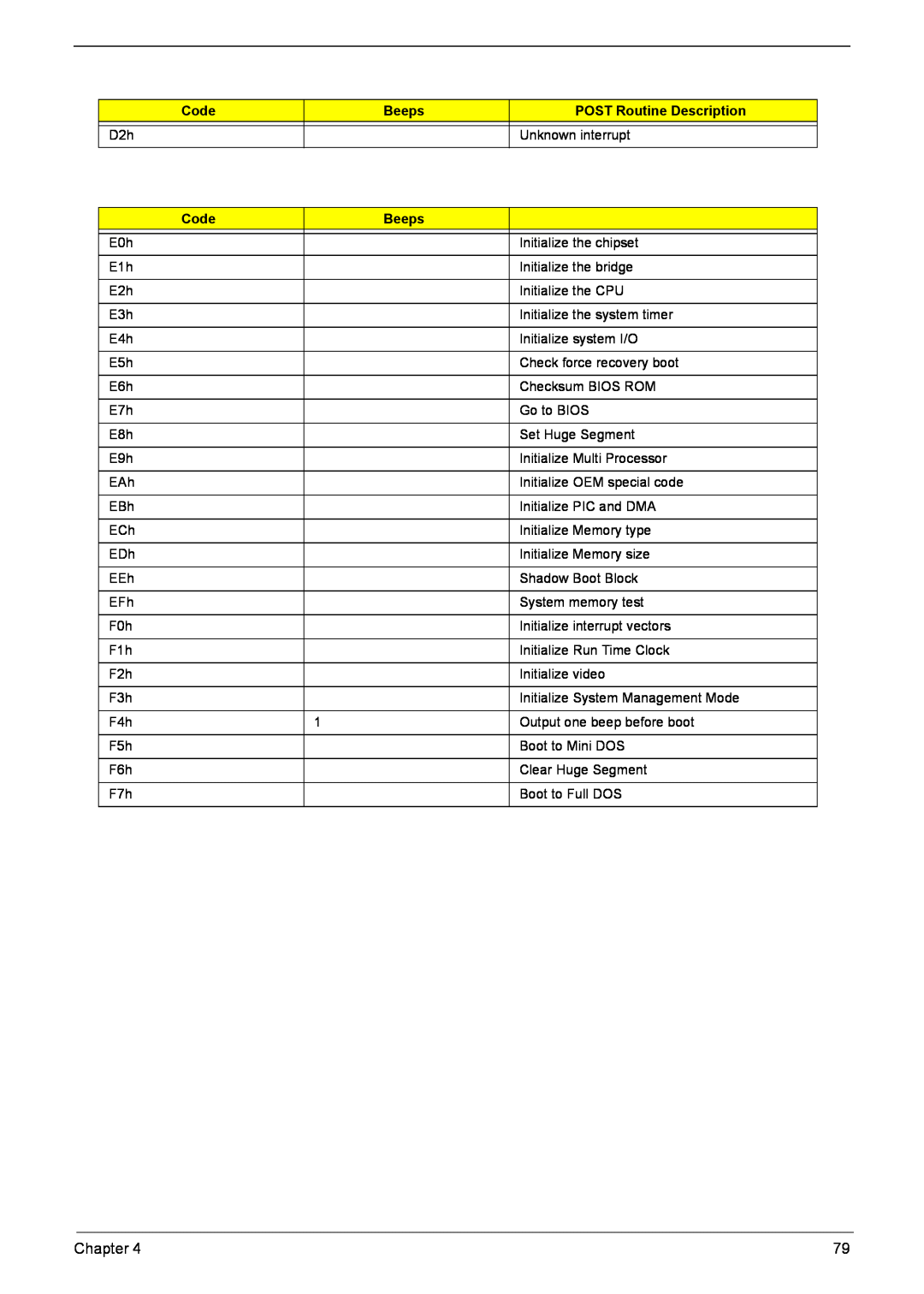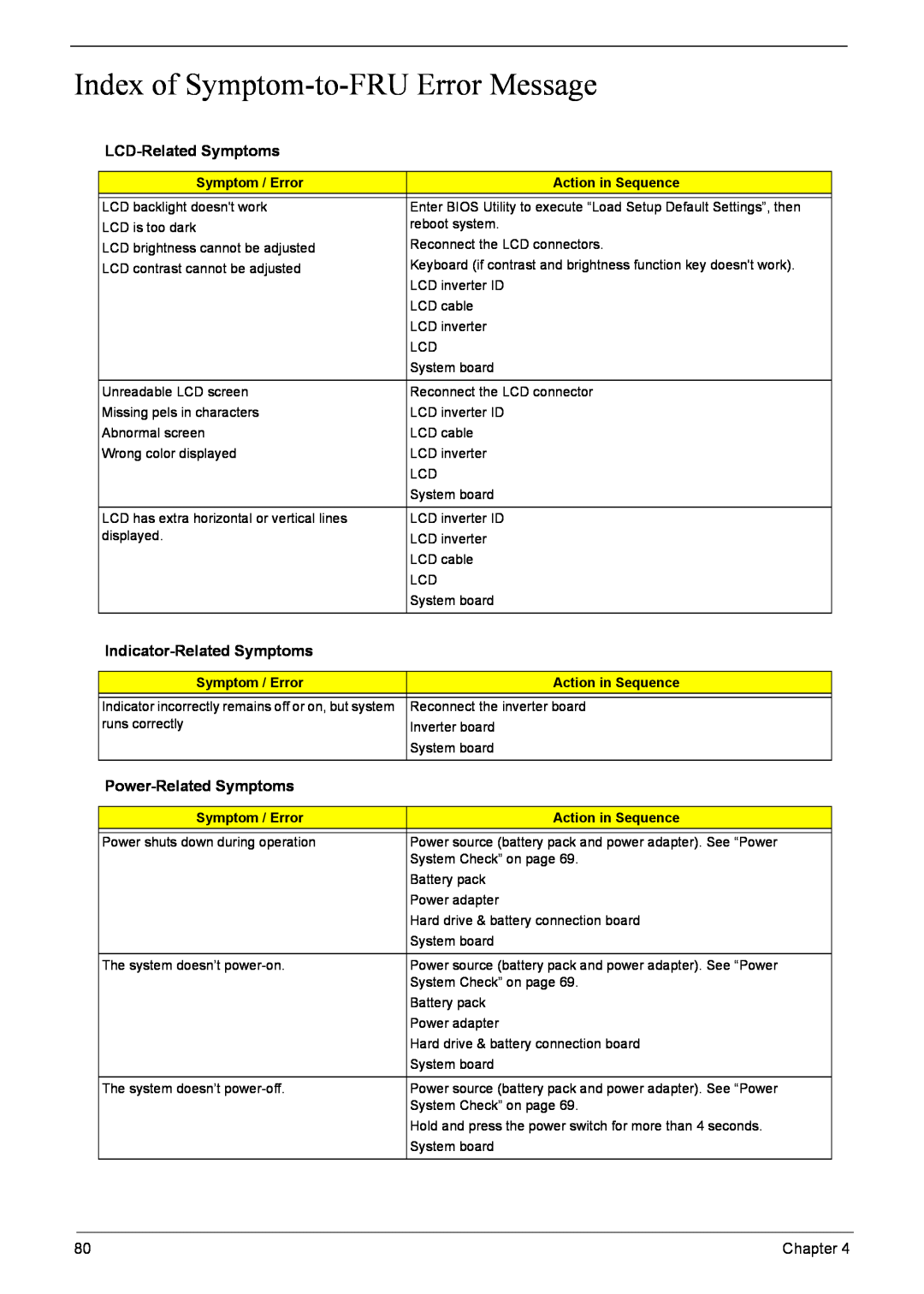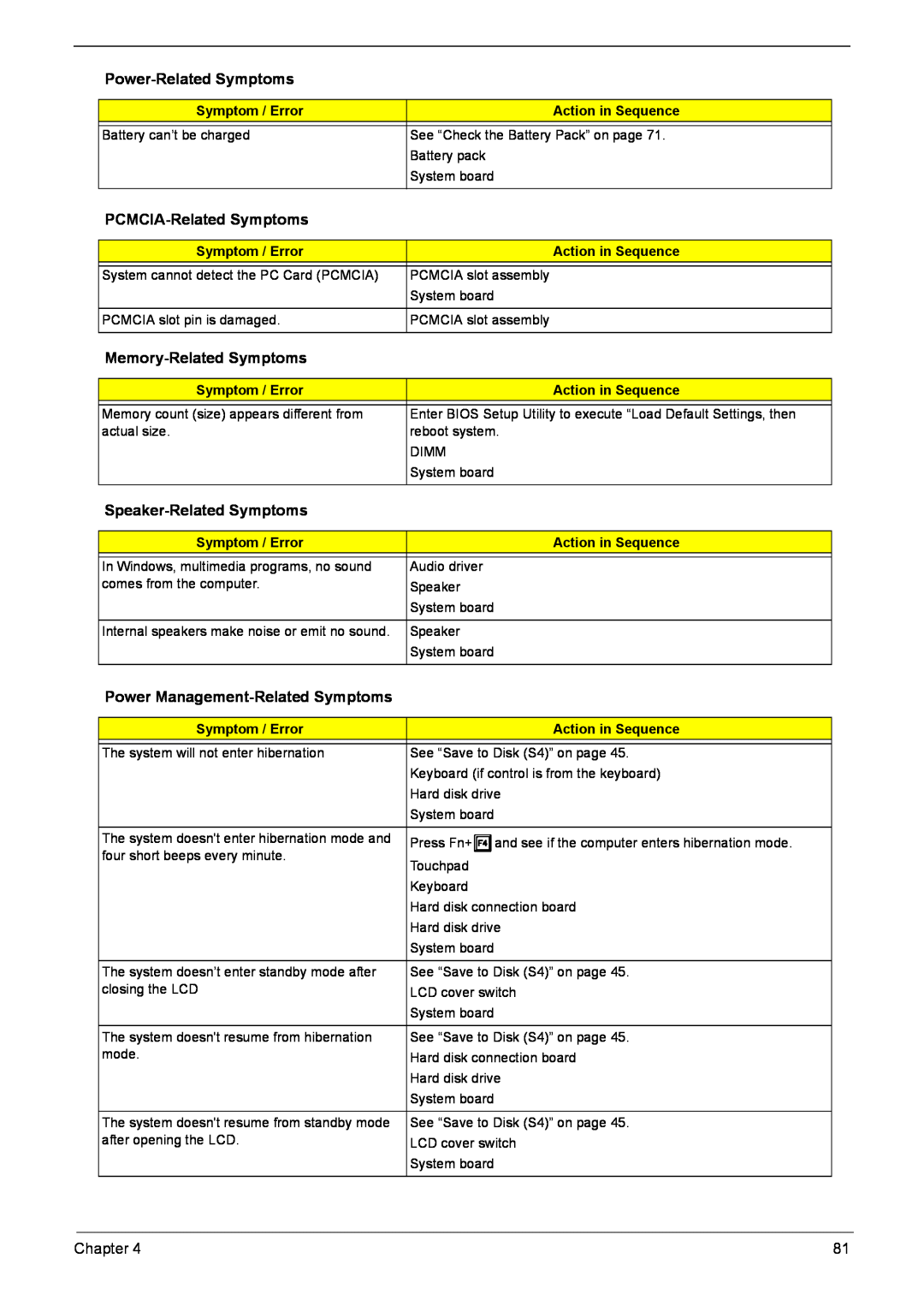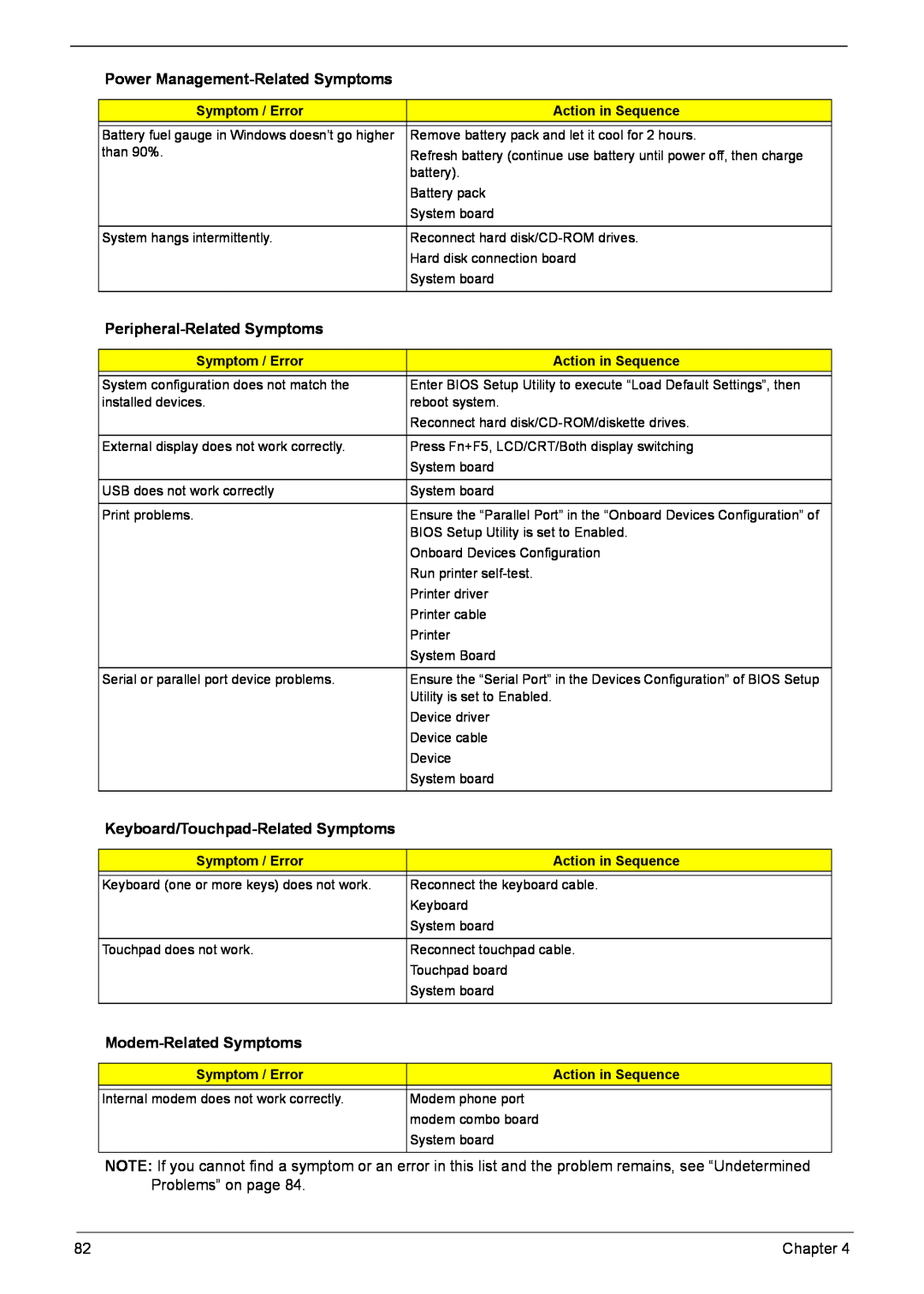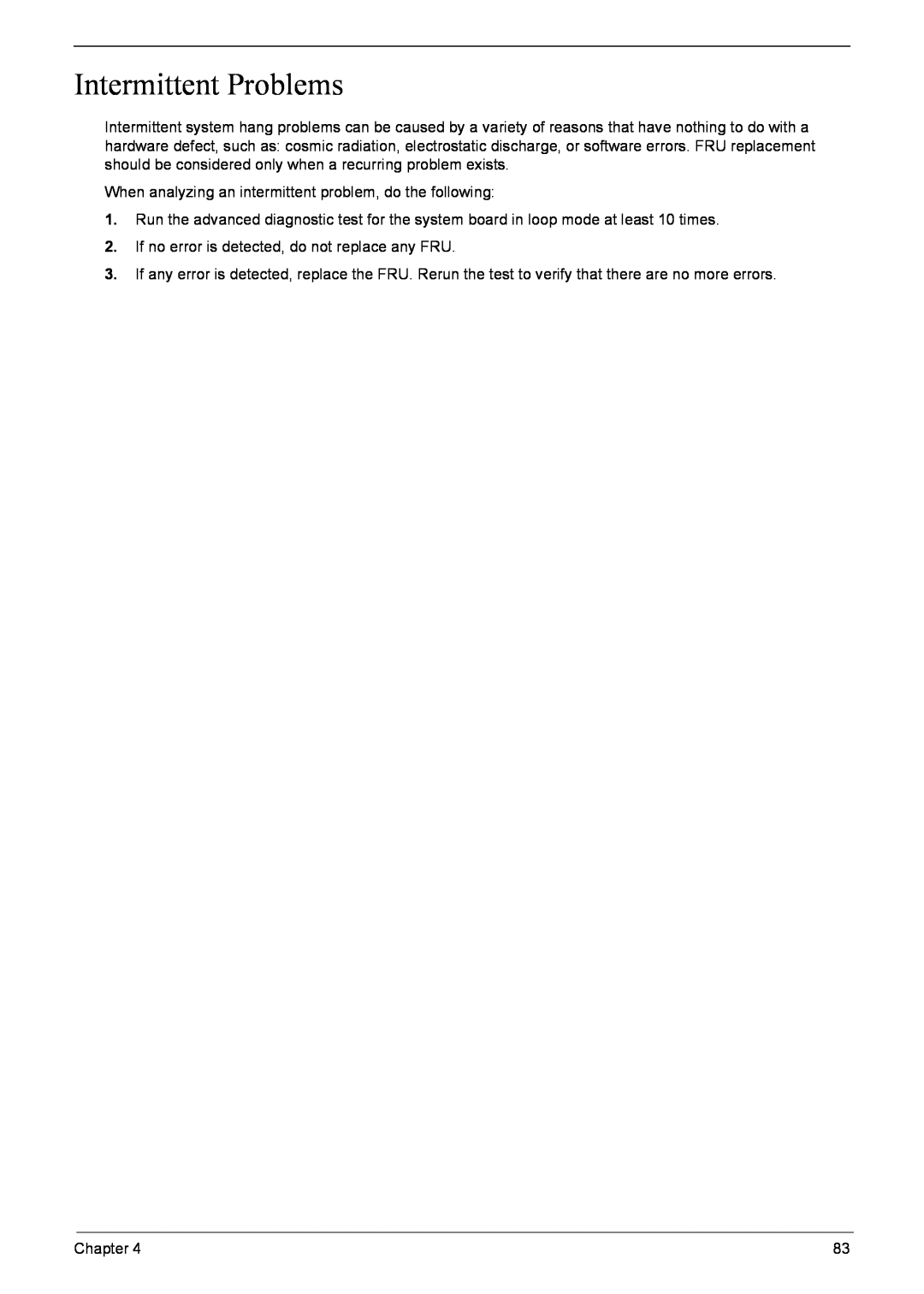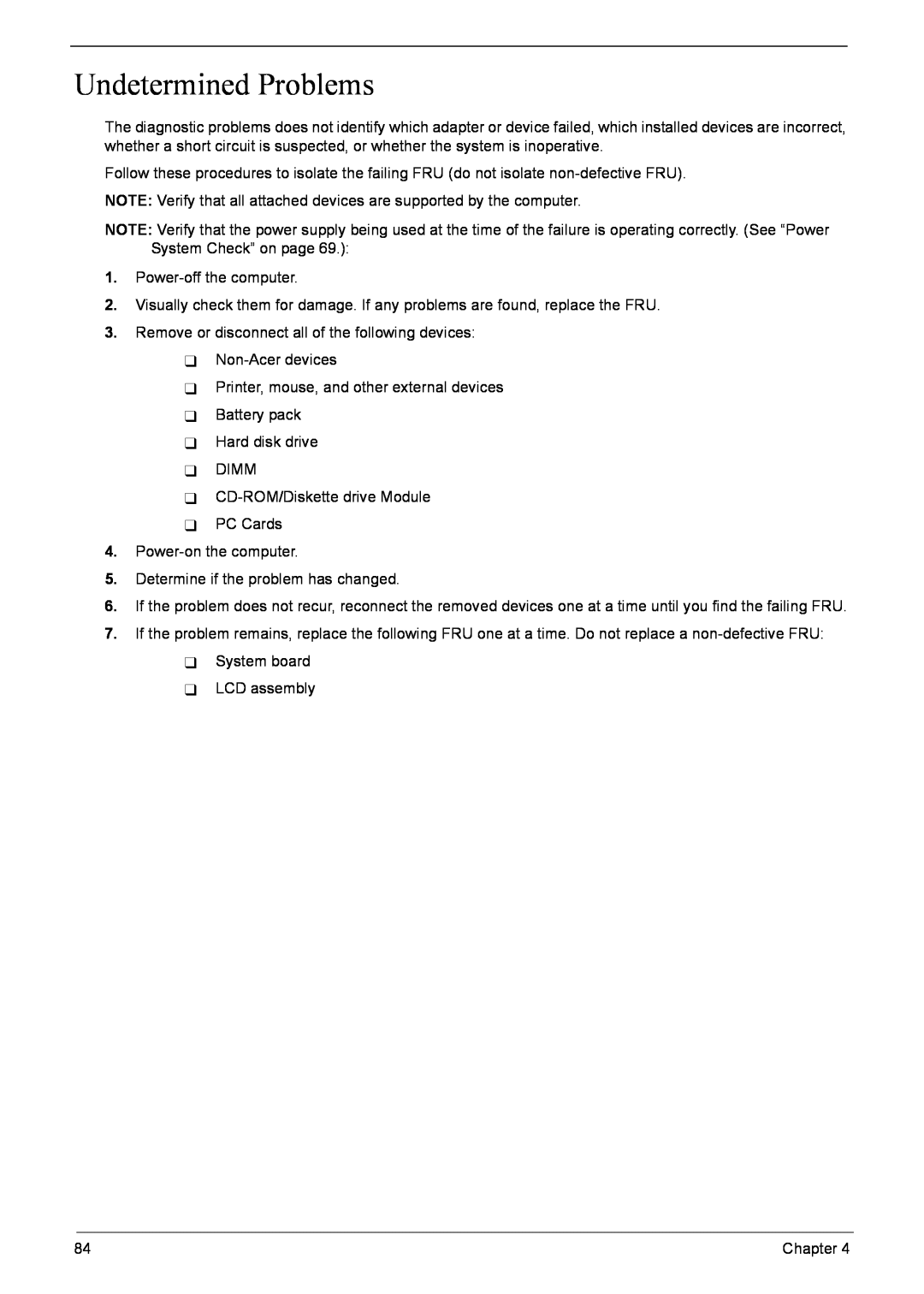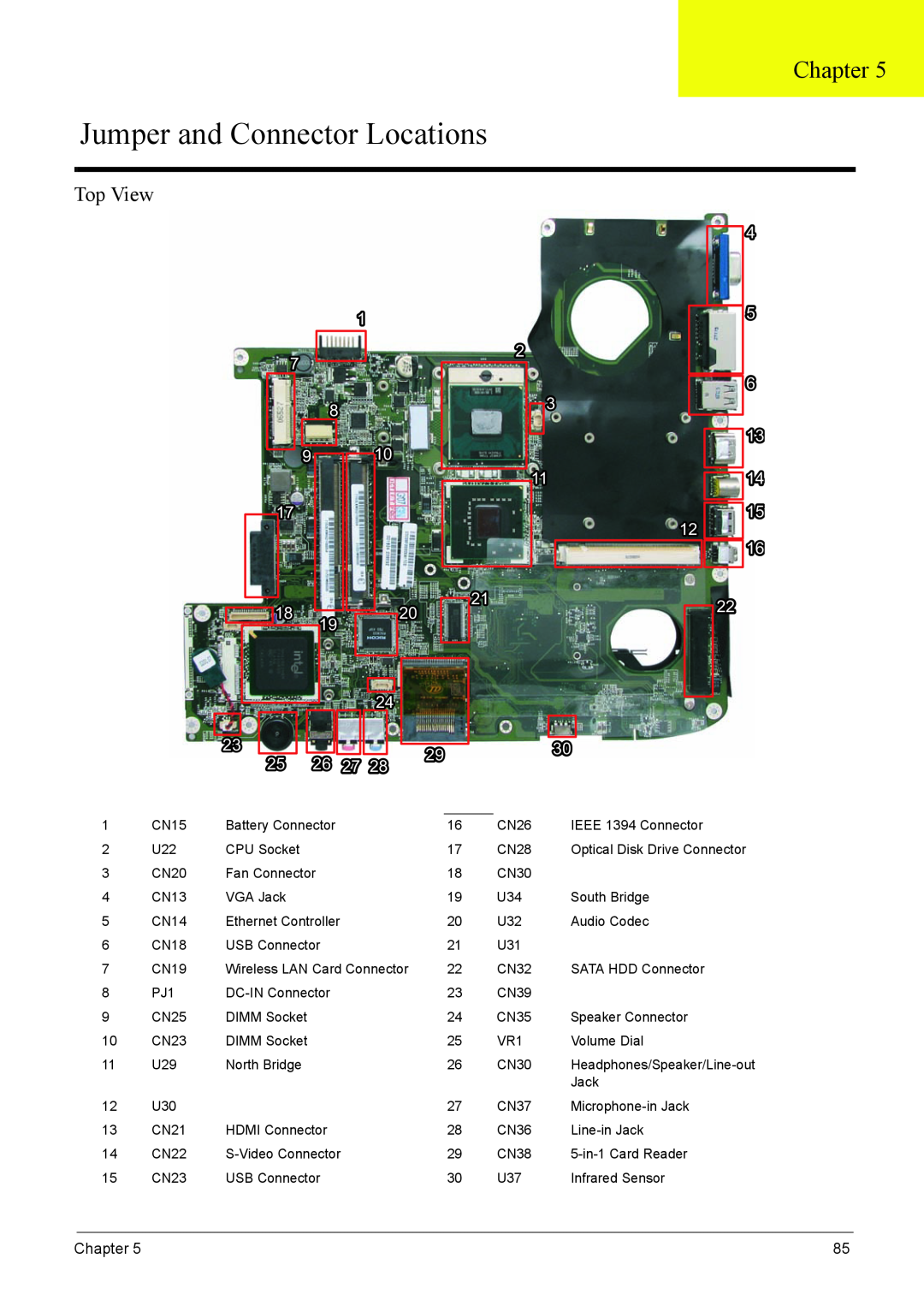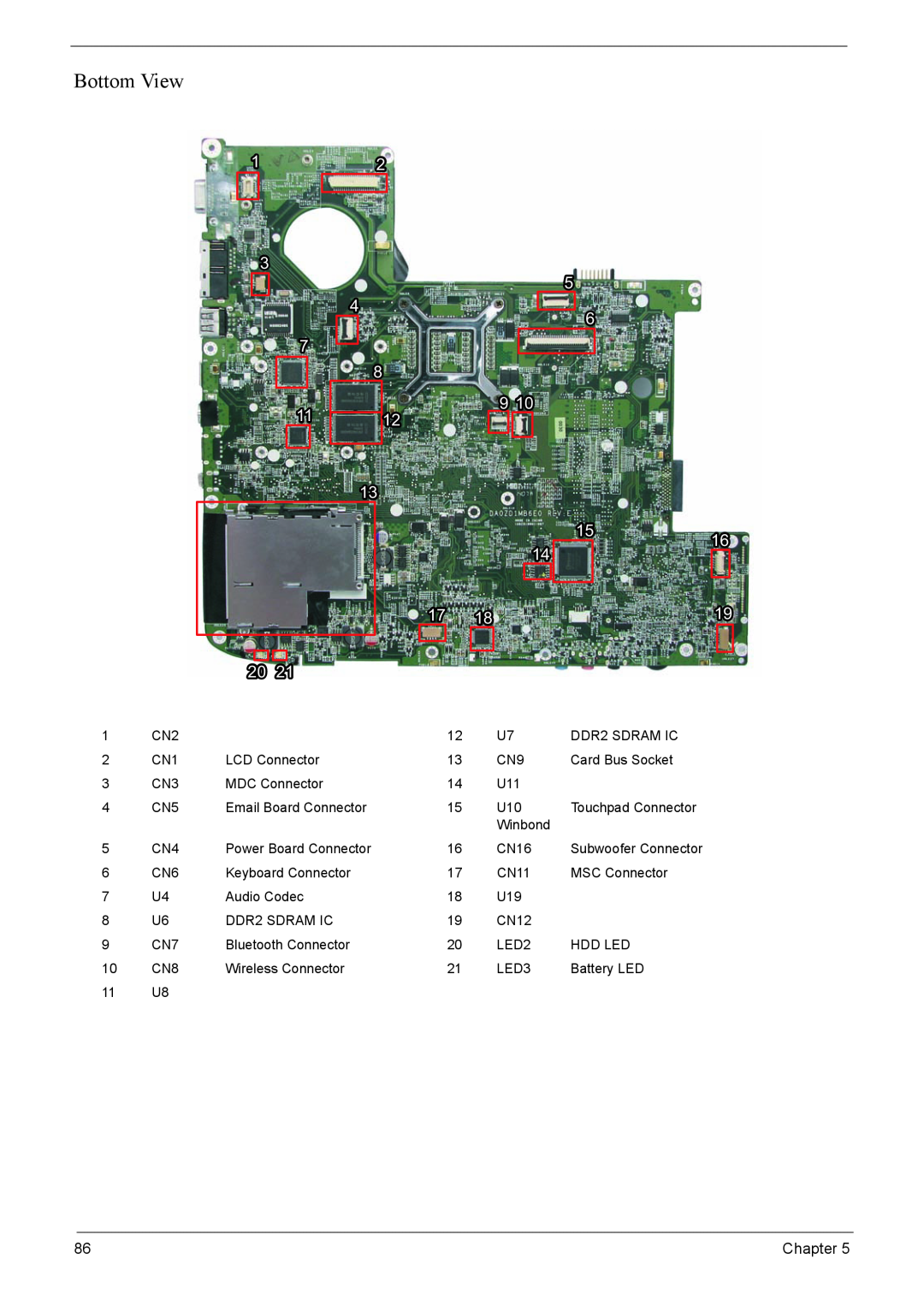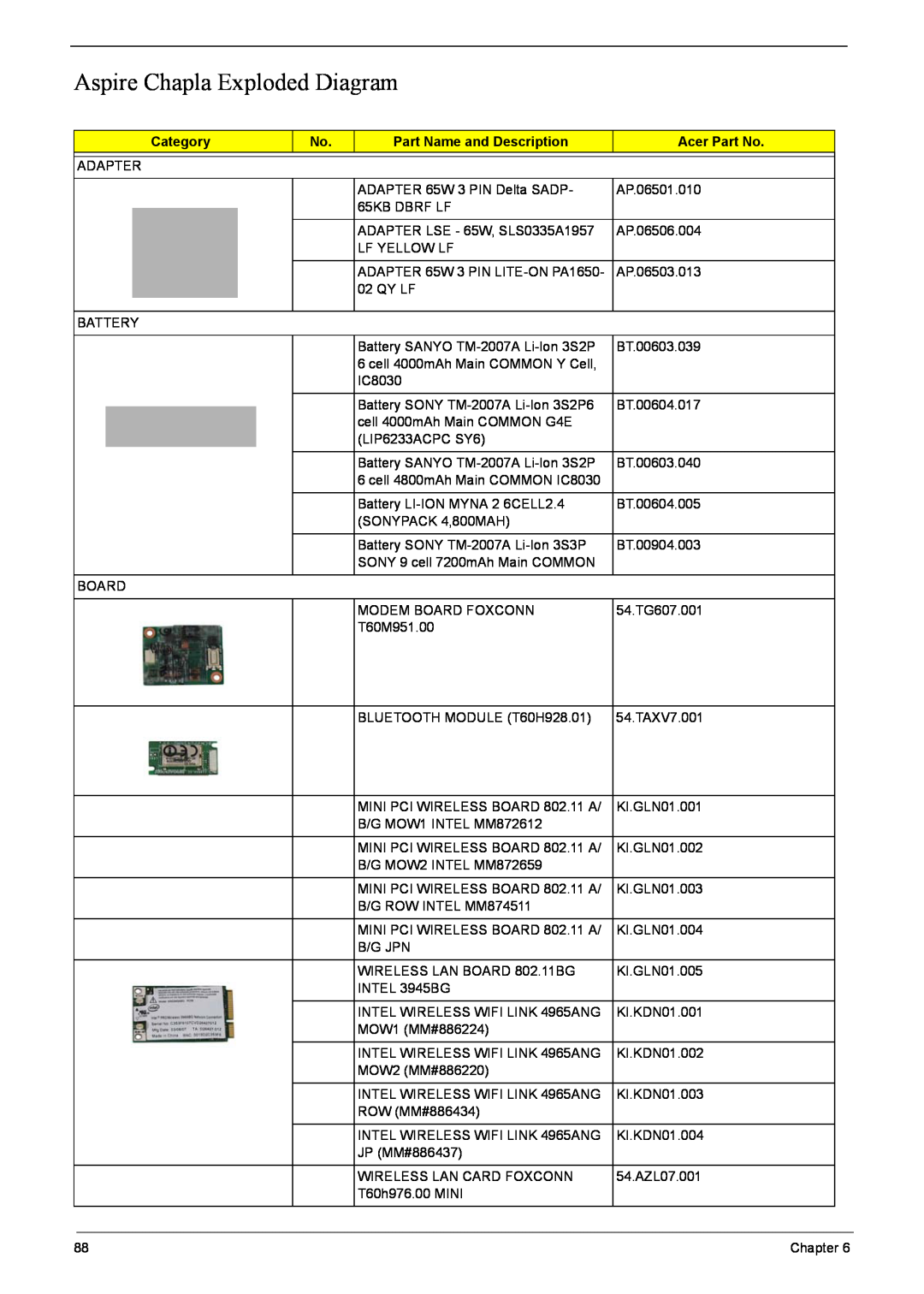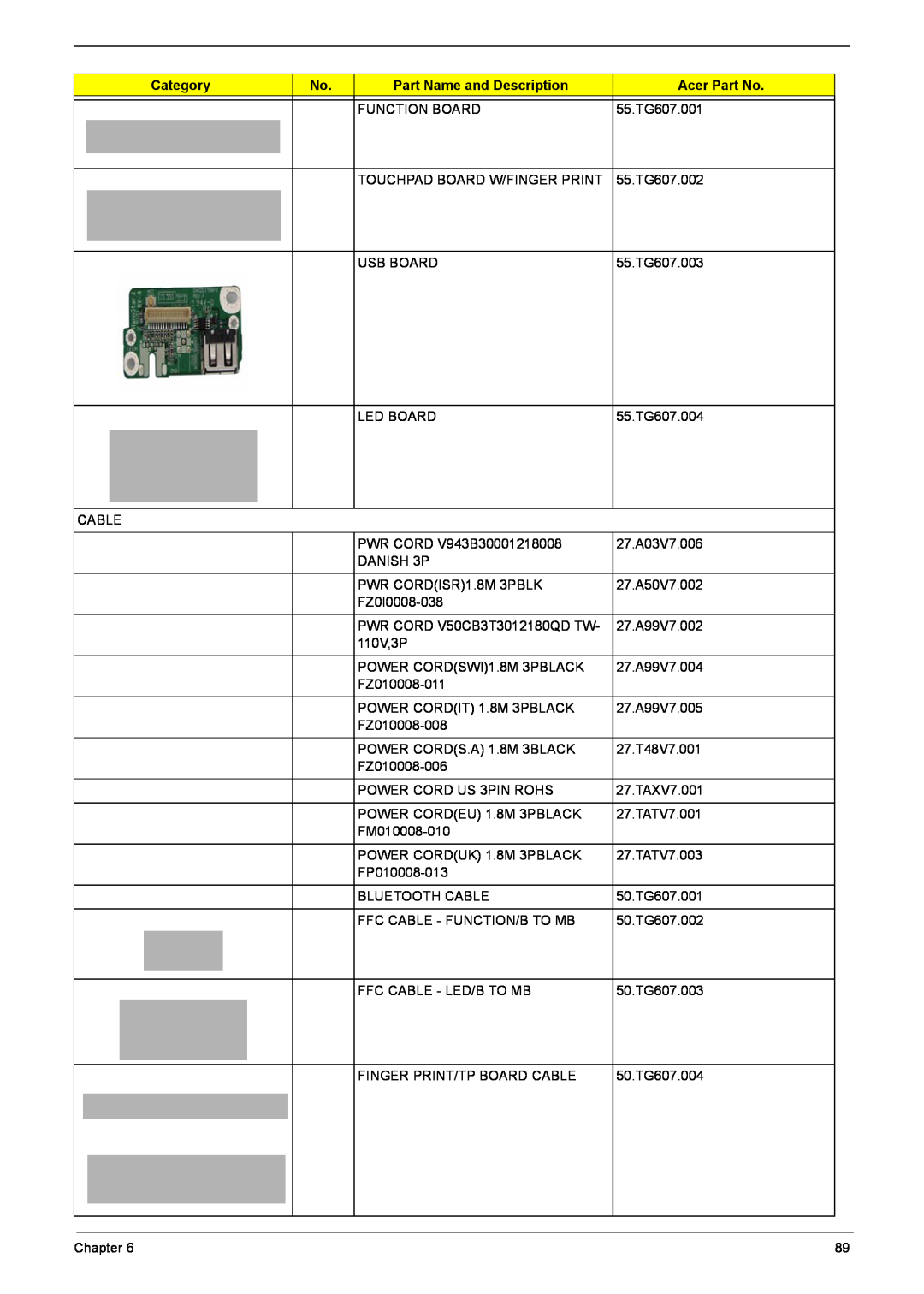
Symptom / Error | Action in Sequence |
|
|
Battery can’t be charged | See “Check the Battery Pack” on page 71. |
| Battery pack |
| System board |
|
|
PCMCIA-Related Symptoms
Symptom / Error | Action in Sequence |
|
|
System cannot detect the PC Card (PCMCIA) | PCMCIA slot assembly |
| System board |
|
|
PCMCIA slot pin is damaged. | PCMCIA slot assembly |
|
|
Memory-Related Symptoms
Symptom / Error | Action in Sequence |
|
|
Memory count (size) appears different from | Enter BIOS Setup Utility to execute “Load Default Settings, then |
actual size. | reboot system. |
| DIMM |
| System board |
|
|
Speaker-Related Symptoms
Symptom / Error | Action in Sequence |
|
|
In Windows, multimedia programs, no sound | Audio driver |
comes from the computer. | Speaker |
| System board |
|
|
Internal speakers make noise or emit no sound. | Speaker |
| System board |
|
|
Power Management-Related Symptoms
Symptom / Error | Action in Sequence |
|
|
The system will not enter hibernation | See “Save to Disk (S4)” on page 45. |
| Keyboard (if control is from the keyboard) |
| Hard disk drive |
| System board |
|
|
The system doesn't enter hibernation mode and | Press Fn+oand see if the computer enters hibernation mode. |
four short beeps every minute. | Touchpad |
| |
| Keyboard |
| Hard disk connection board |
| Hard disk drive |
| System board |
|
|
The system doesn’t enter standby mode after | See “Save to Disk (S4)” on page 45. |
closing the LCD | LCD cover switch |
| System board |
|
|
The system doesn't resume from hibernation | See “Save to Disk (S4)” on page 45. |
mode. | Hard disk connection board |
| Hard disk drive |
| System board |
|
|
The system doesn't resume from standby mode | See “Save to Disk (S4)” on page 45. |
after opening the LCD. | LCD cover switch |
| System board |
|
|
Chapter 4 | 81 |
